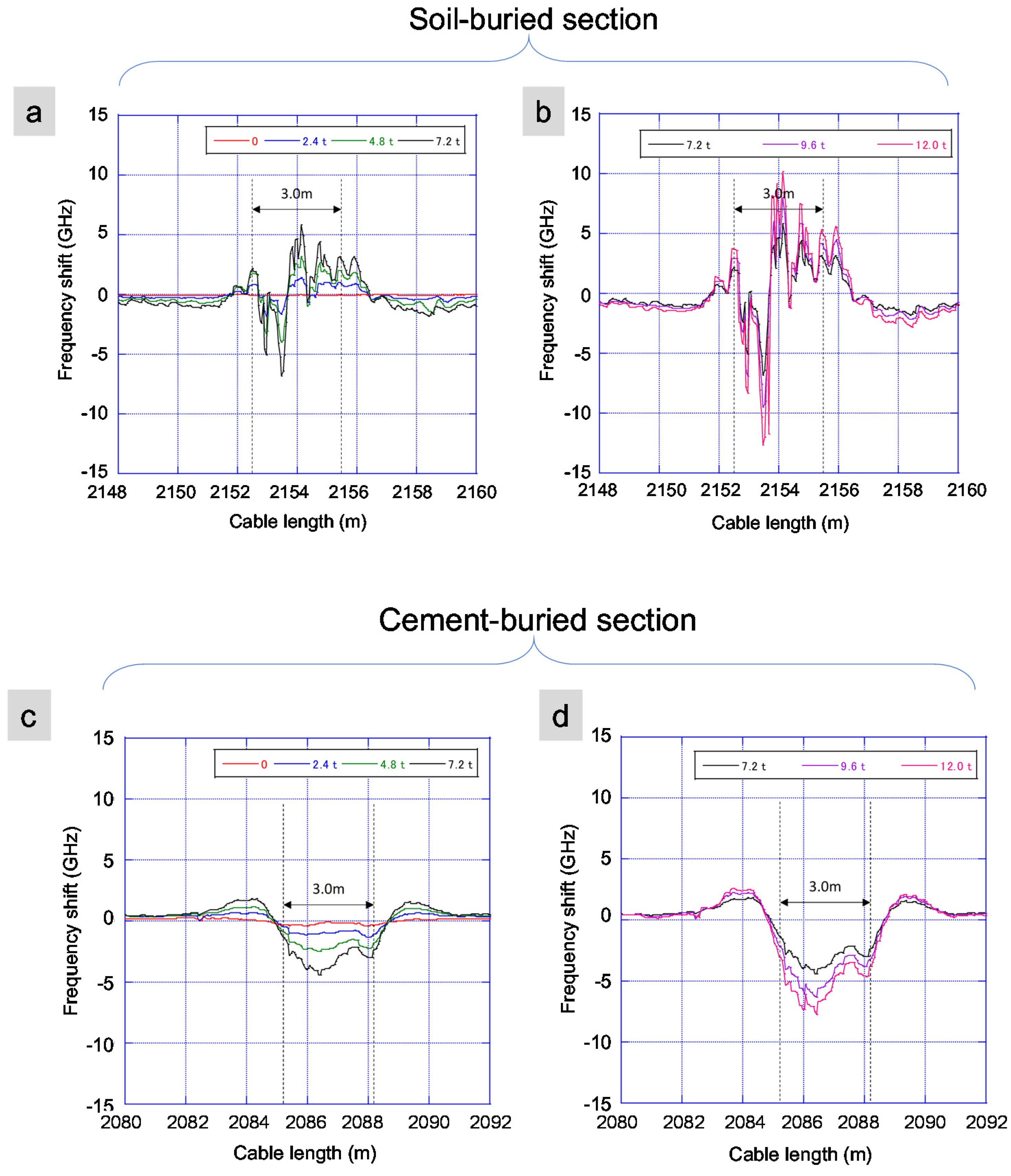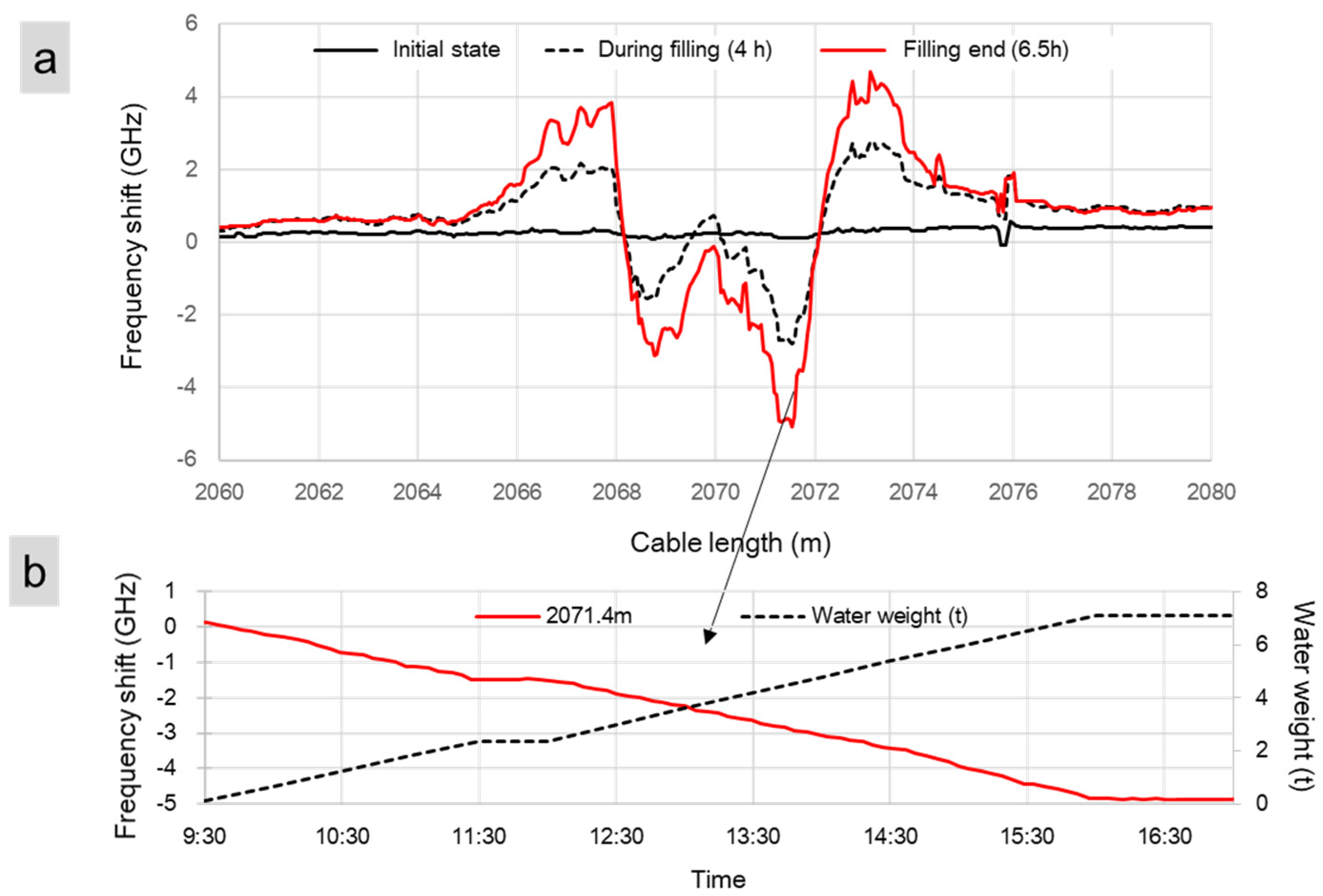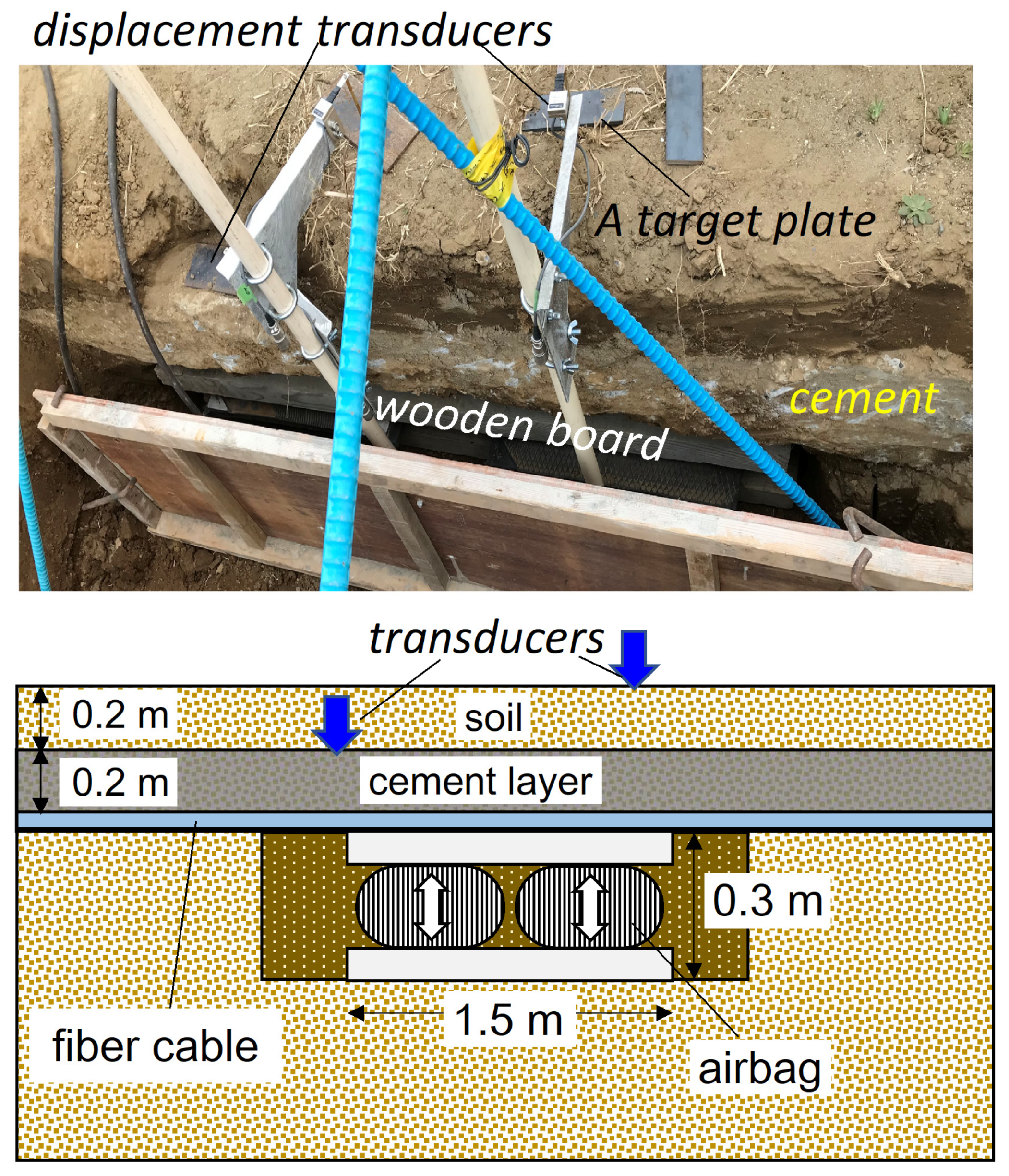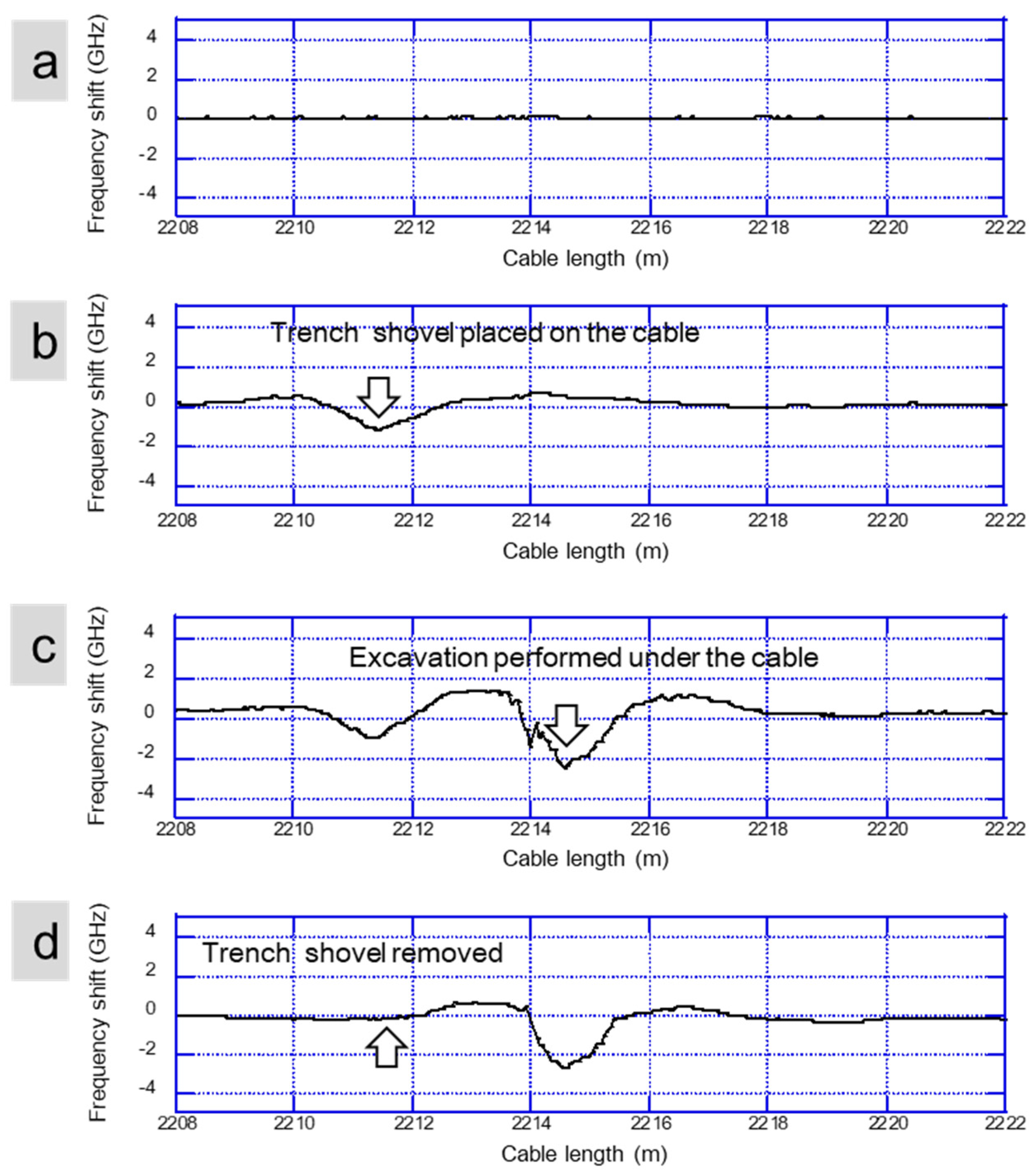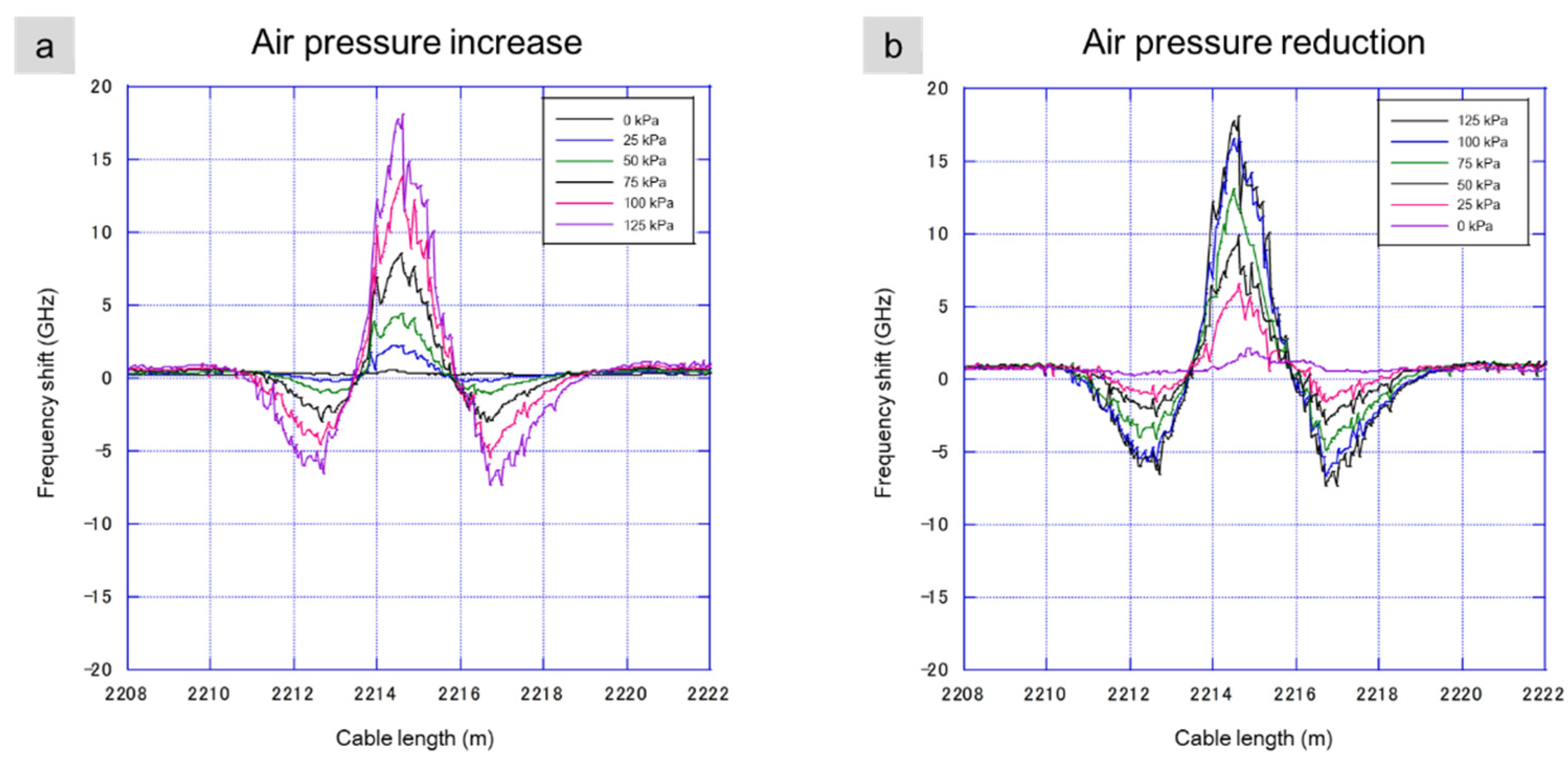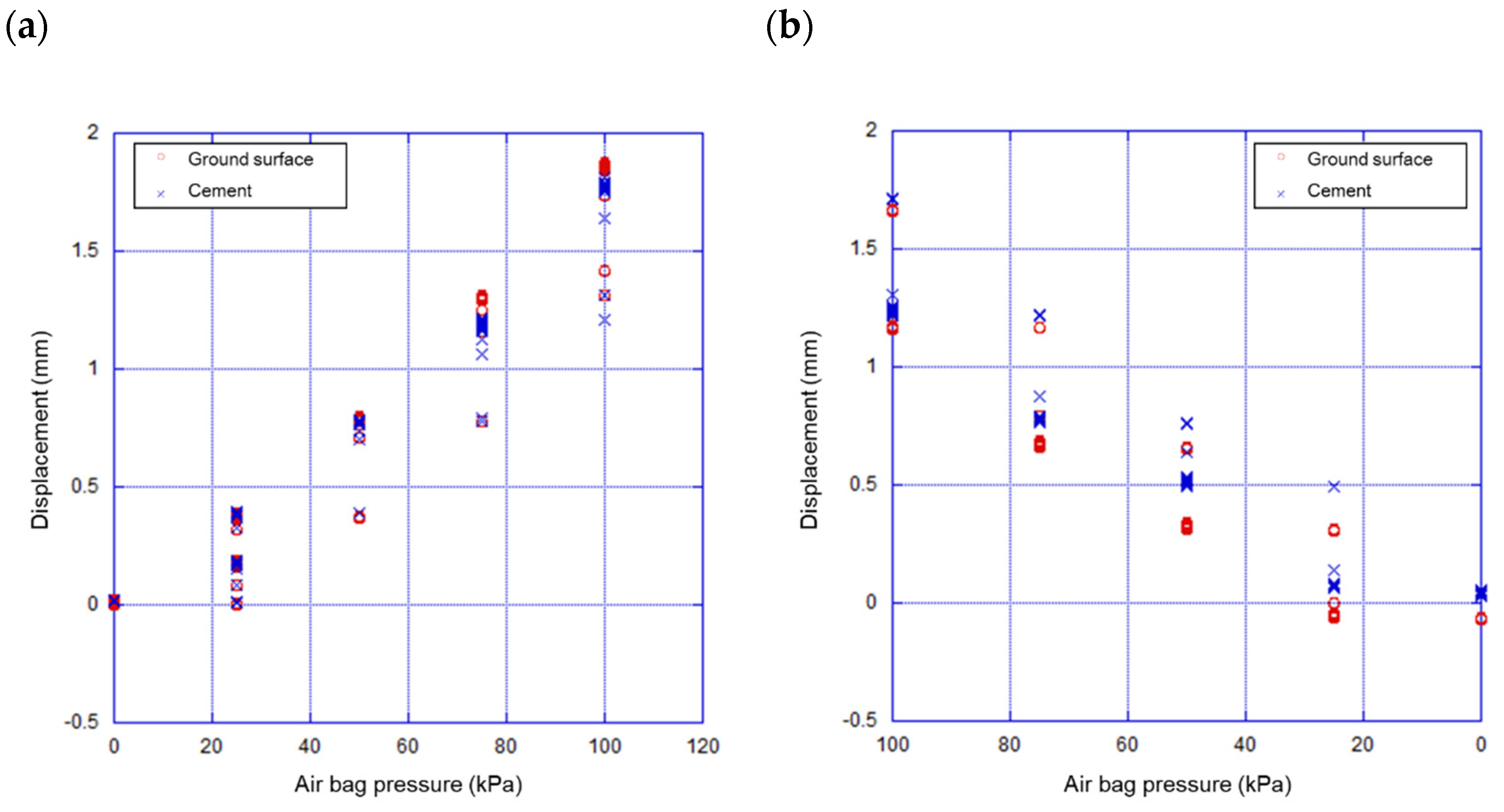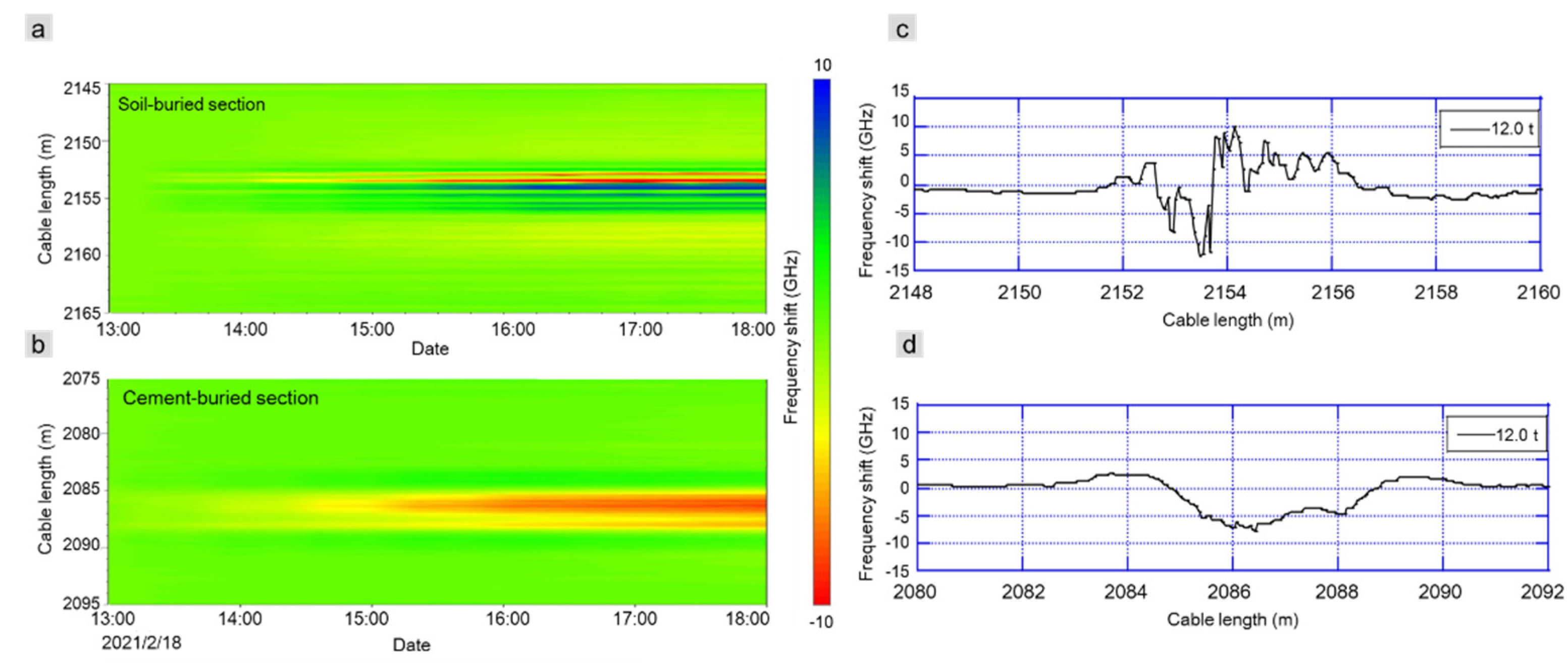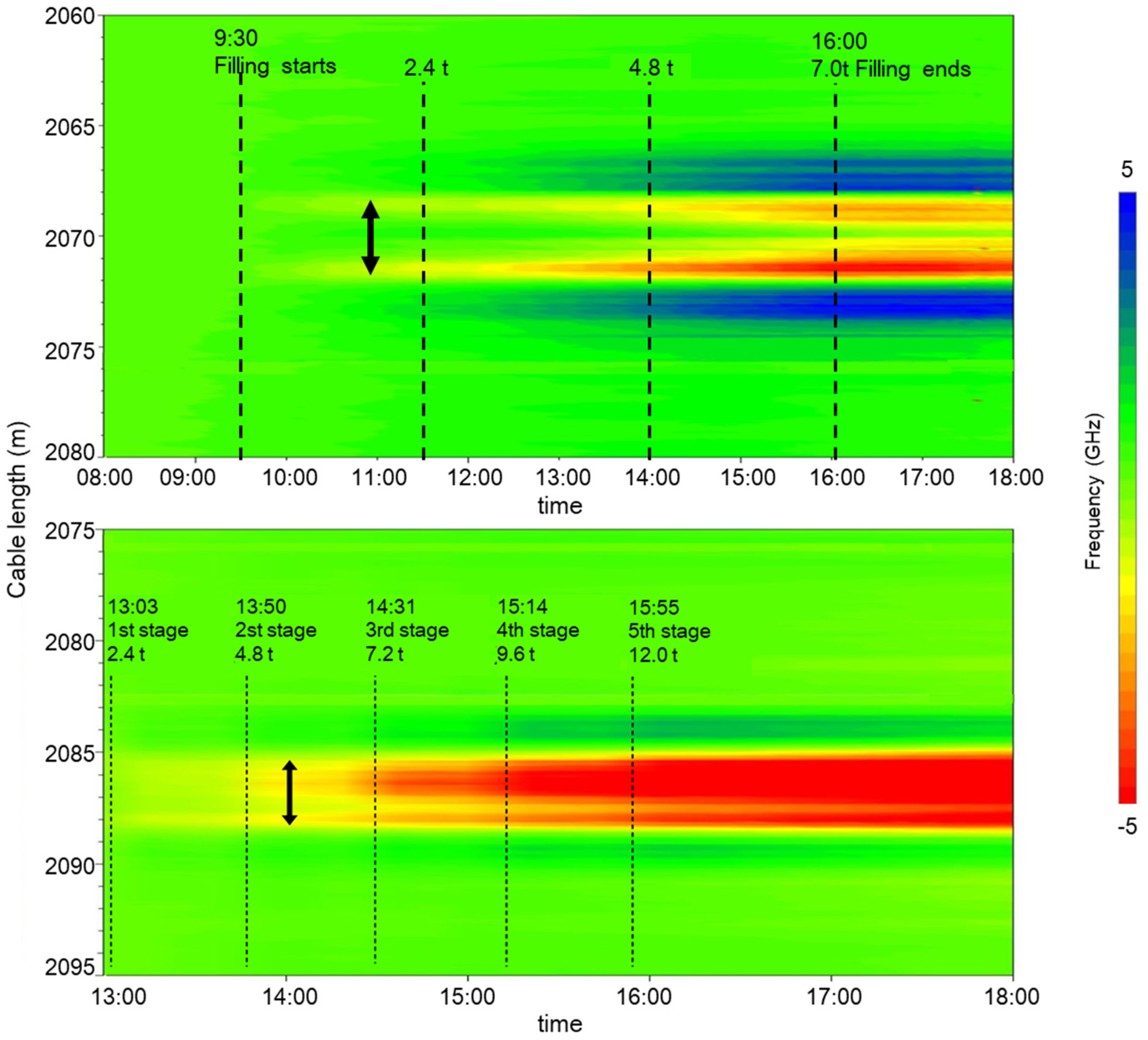1. Introduction
The Earth’s surface is subject to deformation generated by tectonic processes, human activity, or the interaction between these activities and surface processes. Vertical deformations can vary considerably in magnitude and can occur on a wide range of timescales. Ground surface deformation includes dynamic overload due to sediment loading and glacial isostatic adjustment, in addition to solid Earth processes, such as earthquakes and volcanoes, groundwater movements in the porous uppermost continental crust, and human activity. Widespread surface deformation (e.g., subsidence, uplift) can also occur when a large volume of fluid is withdrawn from or reintroduced to an underground reservoir system [
1,
2,
3].
The most prominent difference between natural and human-induced geohazards lies in the correlation between surface instability and anthropogenic activities. Although there can be a time delay of ground deformation after human activity, human-induced geohazards show rapid growth (up to tens of cm/yr) and encompass a varying but generally small area [
4], thus increasing critical risks and highlighting the importance of relevant monitoring. Surface deformation measurements, including measurements of subsidence and uplift caused by human activities, have indicated the strong correlation between pressure changes in subsurface and surface uplift or subsidence. In this context, continuous spatiotemporal strain data from deep deformations to the surface and continuous spatiotemporal surface strain measurements at a small scale might be required to correlate subsurface pressure changes with surface deformation.
To date, various monitoring methods and sensors have been used in surface deformation monitoring (e.g., GPS, tiltmeter) [
5,
6], and satellite interferometric synthetic aperture radar [
7,
8,
9] has provided essentially global observations, with corresponding opportunities to study elastic responses to surface loading. These techniques are also useful for measuring poroelastic and unrecoverable (inelastic) deformation associated with hydrologic phenomena [
10]. However, these technologies do not provide a complete solution to the issues involved in deformation measurement. One of the major limitations of these methods is an insufficient number of coherent points due to decorrelation.
In recent years, distributed fiber optic strain sensing (DFOSS) has been introduced as an effective tool to continuously detect subsurface deformation, providing a creative solution for the limitations of conventional methods. This technique is based on a shift in the Brillouin and Rayleigh backscattering frequency, which reflects the magnitude of change in environmental parameters, such as strain or temperature. The location of these changes can be estimated from the travel time of the scattered light [
11]. Sun et al. [
12,
13] applied the DFOSS technique with a fiber optic cable installed behind a well casing and successfully measured geomechanical deformation of a reservoir in water injection tests. The authors concentrated on the induced strain and characterization to account for the magnitude and range of the geomechanical deformation profile along the entire well depth direction. For surface deformation, continuous surface points are needed for deformation mapping; therefore, installing optical fiber cables in the surface could be an effective method because it would enable one to detect deformation along the cable. Additionally, surface-based strain monitoring may be valuable when combined with subsurface-based strain monitoring (wellbore DFOSS) because these two methods complement each other and compensate for the limitations encountered when using a single monitoring method. Moreover, surface and/or subsurface dynamics can be monitored in a three-dimensional manner by using vertical and horizontal installation technology together.
To successfully implement fiber optic sensing, the installation method must be carefully considered. There are a variety of methods for installing fiber; the installation method to be used is flexibly selected depending on each property and target. For surface deformation monitoring, the fiber cable must be installed horizontally in the surface, and an installation method must be chosen to avoid environmental effects, protect the cable to enhance the fiber lifetime, avoid soil heterogeneity effects, and achieve cable coupling with the ground while maintaining a high strain sensitivity.
In this study, we performed three field experiments for ground surface deformation monitoring using fiber optic strain sensing technology. A single-mode fiber cable was installed in a shallow trench, with one part covered by soil and the other part covered by cement. The first test was conducted by applying a static weight load (iron plates) that increased in five stages. The DFOSS response was recorded for both the soil part and the cement part in order to confirm the best method for cable installation. In the second test, the DFOSS response was examined under continual deformation caused by a dynamic load produced by gradually filling a water tank placed above the fiber covered by cement. For the third test, the soil under the cable was excavated, and the DFOSS response to the cavern caused by this process was recorded. Subsequently, two airbags were inserted into the cavern under the fiber cable, and an airbag inflation/deflation experiment was performed. In this experiment, the air pressure in the bag was gradually increased and then decreased, and the deformation was recorded by DFOSS for both steps to confirm the ability of DFOSS to monitor uplift and subsidence.
2. Optical Fiber Strain Measurement and Cable Installation
DFOSS is effective for surface deformation monitoring due to its high sensitivity of approximately 0.5 με [
11]. Compared with conventional methods, DFOSS has many advantages for surface monitoring, including its safe application under electromagnetic interference, waterproof characteristics, high durability, small size, and passive mechanism [
14]. Importantly, by using a single-mode fiber, distributed sensing can monitor deformations along the entire length of the optical fiber (at fixed spatial intervals), providing accurate high-resolution data to clarify the deformation of a structure [
15].
To achieve a high strain sensitivity, the method of cable installation must be carefully considered to avoid environmental effects. In this case, a fiber cable with a total length of approximately 2.9 km was installed in a shallow trench less than 50 cm deep. One part of the cable was covered with soil, while the other part was covered with cement. The first test was performed with the same load weight conditions for the two sections, and the strains were measured separately to confirm the best surface installation method.
In the previous studies strain was converted from Rayleigh frequency shifts recorded by a tunable-wavelength coherent optical time-domain reflectometer utilizing Rayleigh backscattered signals to detect deformation in the direction of length of the fiber cable [
13,
16,
17] and the conversion coefficient is 0.130 ± 0.0096 GHz/με (1 GHz ≈ 7 με) [
17,
18]. In this study ground deformation occurs in a direction perpendicular to the fiber cable and Rayleigh frequency shifts can be converted to strain but strain cannot be explained directly as a vertical deformation of the ground surface. Surface deformations resulting from the static and dynamic loading, and airbag inflation/deflation tests were observed from Rayleigh frequency shifts recorded by the NBX-8000 interrogator produced by Neubrex Co., Ltd., Kobe, Japan. A single-mode embossed strain sensing fiber cable (FN-SILL-3, Neubrex Co., Ltd., Kobe, Japan) offers linear responses to 5000 με strain and long-term heat resistance up to 80 °C.
4. Discussion
Based on previous studies on fiber strain sensing, e.g., [
13,
17,
18,
19], DFOSS can successfully monitor geomechanical deformations caused by fluid injection. These deformations can be continuously monitored along a wellbore. To correlate subsurface deformation with ground surface deformation, fiber optic strain sensing must be combined with other conventional surface monitoring methods. Although considerable achievements have been reported, challenges remain in detecting localized deformation, in addition to limitations regarding continuous temporal monitoring for cases of fluid injection-induced deformation. Surface deformation mapping requires continuous spatiotemporal monitoring points on the surface, which cannot be achieved by DFOSS wellbore installation alone. Therefore, the installation of DFOSS in the surface to monitor ground deformation along the cable could be an effective approach, especially when combined with well-based strain sensing.
This study indicates that DFOSS is a valuable technique for surface deformation monitoring. We aimed to determine a practical method for fiber installation and then to confirm DFOSS as a surface deformation technology via pilot field tests, using several experiments to test the sensitivity of DFOSS for different cases of surface deformation.
4.1. Fiber Installation for Surface Ground Deformation Monitoring
Based on the results from the first static loading test for the fiber covered with soil, the subsidence and uplift obtained together at the plate position indicated that the soil had loosened and then compacted under the load, causing weak coupling of the cable with the ground, as shown in
Figure 9a. This result suggests that the deformation strongly depends on the soil conditions in this case. Therefore, for long-term (permanent) monitoring, baseline data monitoring results may change due to weather conditions (rainy, dry). For the cement-covered fiber, the negative Rayleigh frequency shifts indicated subsidence induced by loading at the plate position, with an area of uplift on each side, as shown in
Figure 9b.
This result indicates that the baseline is stable, with limited environmental effects. Hence, for long-term monitoring, this method will be suitable for obtaining stable baseline conditions and for accurately detecting deformations. The same results were observed for the final stage of iron plate loading. The deformation due to loading is clearer for the cable covered with cement compared with the cable covered by soil. The results also suggest that the cement-covered fiber more rapidly recorded the strain, with greater sensitivity at the plate position. In addition, uplifting is also observed on the sides of the plates around the subsidence. Based on our results, the cement-covered method of fiber installation is recommended for long-term ground surface deformation monitoring.
4.2. Locating of the Deformed Position and Subsidence-Uplift Monitoring
The results of the second test show a clear profile, with subsidence appearing under the tank due to the dynamic water filling up loading. Uplift was observed at the two sides approximately 1.5 h after the water filling process started. In
Figure 10, the upper panel shows the time-lapse change in the frequency shit over the cable length for the fiber covered by cement, and water level changes are shown in the lower panel. The deformation magnitude increased over time as the water level increased, reaching a maximum when the filling stopped. The deformation maintained a constant magnitude, with the red color in the figure indicating subsidence and the blue color indicating uplift on the two sides. This result suggests that DFOSS can accurately detect deformations and anomalies along the cable for a long-term spatiotemporal surface deformation monitoring.
The results from the third test confirm the high sensitivity of DFOSS for ground uplift-subsidence monitoring. The ground subsidence caused by soil removal was clearly detected by DFOSS, suggesting that DFOSS is useful for structural health monitoring as well as road collapses associated with underground excavations in the near future. Moreover, DFOSS is sufficiently sensitive to detect subsidence caused at the trench shovel position at a high resolution. DFOSS also detected the uplift caused by increased airbag pressure and the subsidence caused by a reduced airbag pressure. These results indicate that DFOSS can be utilized as an accurate ground surface deformation monitoring technology with high spatiotemporal resolution.
4.3. Imaging Distributed Deformation Profiles on the Surface Caused by Vertical Dynamics (Natural Dynamics and Anthropogenic Activities)
The results from the first and second test (dynamic continuous load and static intermittent load) are compared in
Figure 11. Although the total load in the water filling up test and the fourth iron plate step were almost the same (9.6 ton) and the Rayleigh frequency shifts at the end of the filling process and after the fourth step were the same (−5 to −6 GHz). This dynamic water filling test result suggests that fiber optic strain sensing could be used to design an alarm system providing advance warning of potentially dangerous deformation. In addition, the dynamic water load caused larger uplift magnitudes on both sides of the tank (+4 GHz, +5 GHz) compared with the static iron plate load, which cased uplift on the two sides of the plates (+2.5 GHz, +2 GHz). The dynamic water load also caused uplift over a larger distance of approximately about 5 m on each side versus 2.5 m for each side in the static test.
However, in the final stage of the static test, the load increased to 12 tons, and the subsidence deformation increased (Rayleigh frequency shift reached −7.5 GHz) at the plate position. The uplift on the two sides did not increase compared with the previous step, confirming that DFOSS can accurately detect these details over time and space and can differentiate the risk of deformation due to human activity (e.g., fluid injection), which grows continuously over time in contrast to deformations caused by natural tectonic events.
For cases of fluid injection, the pressure change starts slowly but can grow rapidly and migrate over large distances (horizontally) and depths (vertically). This behavior highlights the importance of continued spatiotemporal vertical and horizontal monitoring at injection sites, to enable early warnings via strain sensing technology. Additionally, we noticed that some responses appeared before reaching the final load for each stage in
Figure 11; this is because we placed the iron plate (weight: 800 kg) by a rafter crane and it took a little time to pile up the plates to reach the total weight for each stage.
5. Conclusions
In this study, we installed a single-mode optical fiber cable in a shallow trench for the ground surface deformation monitoring with the distributed fiber optic strain sensing (DFOSS) technique. We conducted three field experimental tests (iron plate load, water tank filling up load, and airbag inflation) in order to confirm the strain sensitivity of DFOSS for static loads, dynamic overload, excavation, subsidence, and uplift. Based on the three experimental tests, our results confirm that DFOSS can monitor ground surface deformation in both subsidence and uplift at CO2 storage or oil and gas production fields. It is also can be utilized for structural health monitoring for detecting anomalies and locating their positions along the fiber cable. The following conclusions can be drawn from the results of this study.
- (1)
For ground surface deformation monitoring, cement-buried fiber installation in the surface is a practical installation method to obtain clear ground surface movement.
- (2)
DFOSS is suitable as a monitoring technology with high accuracy and reliability for locating anomalies along a fiber optic cable.
- (3)
DFOSS is a high-sensitivity technology for monitoring subsidence and uplift and can thus be applied for both onshore and offshore CO2 storage or oil and gas production fields.
- (4)
Ideal surface monitoring can be achieved with DFOSS by incorporating well-based strain sensing, allowing ground deformation (horizontal in the surface and vertical in the subsurface) to be monitored in three dimensions.

